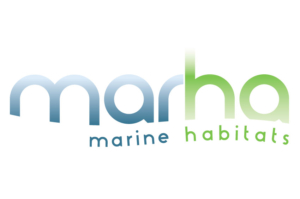
EU-LIFE PLatform meeting - Strictly protected marine areas

Le 20 mai 2020, la Commission européenne a communiqué sur une « Stratégie de l'UE pour la biodiversité à l'horizon 2030 – Ramener la nature dans nos vies ». Cette stratégie fixe l'objectif ambitieux d'établir un réseau naturel transeuropéen véritablement cohérent, incluant une protection juridique pour au moins 30 % des terres, y compris les eaux intérieures, et 30 % des eaux marines de l'UE, dont au moins 1/ 3 (10 % de terre et 10 % de mer) sous stricte protection. Ces objectifs ont été salués par le Conseil de l'UE et soutenus par un rapport d'initiative du Parlement européen.
La Commission a produit en octobre 2020 un projet de note sur les critères et les orientations pour la désignation des zones protégées. Elle comprend une définition de la protection stricte afin de répondre aux objectifs fixés dans la stratégie. Les États membres et les parties prenantes ont eu l'occasion de discuter des projets successifs de cette note, qui devrait être adoptée avant la fin 2021.
Des zones de protection forte existent déjà dans la plupart des États membres, parfois avec des désignations différentes et avec des degrés de protection variables (inclus dans le zonage des aires protégées, ou à travers des désignations telles que réserves naturelles, réserves scientifiques, « zones de non prélèvement » etc.).
Dans ce cadre, l'Agence européenne pour le climat, les infrastructures et l'environnement (CINEA) a demandé à Life IP Marha d'organiser une synthèse des expériences nationales sur la mise en place de zones de protection fortes. Cette synthèse fera l'objet d'un séminaire de travail qui vise à présenter des études-cas de mise en place de zones de protection forte, afin d'en comprendre les mécanismes, d'échanger sur les outils utilisés, les méthodes suivies, les travaux scientifiques et techniques réalisés.
Si cette réflexion vous intéresse, nous vous invitons à consulter le site internet dédié au « Life Platform meeting 2022 », à vous inscrire si vous avez la possibilité de venir physiquement, et à proposer une communication écrite, poster ou orale. La conférence sera également partagée par visioconférence. Enfin, ceux dont les communications sont acceptées peuvent être financés pour venir présenter leur contribution.
Les contributions peuvent porter sur 4 thèmes :
- le contexte social et géopolitique de la mise en place des zones de protection forte ;
- la valeur ajoutée économique des zones de protection forte ;
- la justification scientifique et écosystémique d'une protection forte ;
- les techniques de mise en place et de gestion des zones de protection forte (consultation, communication, outils juridiques, financement, suivi, évaluation, contrôle, etc.).
Le platform meeting 2022 se tiendra du 22 au 23 mars à La Rochelle, en France.
Le platform meeting sera également retransmise en visioconférence.
The European Commission adopted, on 20th May 2020, a Communication on an “EU Biodiversity Strategy for 2030 – Bringing nature back into our lives”. This Strategy sets an ambitious objective of establishing a truly coherent Trans-European Nature Network, to include legal protection for at least 30% of the land, including inland waters, and 30% of the sea in the EU, of which at least 1/3 (10% of land and 10% of sea) to be under strict protection. These targets have been welcomed by the EU Council and supported by an own-initiative report of the European Parliament.
The Commission produced in October 2020 a draft note on criteria and guidance for protected areas designation, which includes a definition of strict protection for the purpose of the implementation of the targets set in the strategy. Member States and stakeholders have had the opportunity to discuss successive drafts of this note, which is expected to be adopted before the end of 2021.
Strong protected areas already exist in most Member States, sometimes with different designations and with varying degrees of protection (included in the zoning of protected areas, or through designations such as nature reserves, scientific reserves, marine “notake zones”, etc.).
In this context, the European Agency for Climate, Infrastructures and the Environment (CINEA) asked Life IP Marha to organize a synthesis of national experiences on the implementation of strong protection zones. This synthesis will be the subject of a working seminar which aims to present study-cases of implementation of strong protection zones, in order to understand the mechanisms, to discuss the tools used, the methods followed, the scientific and technical work carried out. If you are interested in this reflection, we invite you to consult the website dedicated to the "Life Platform meeting 2022", to register if you have the possibility to come physically, and to propose a written, poster or oral communication. The conference will also be shared by videoconference. Finally, those whose papers are accepted may be funded to come and present their contribution to the reflection.
The contributions may relate to 4 themes:
- the social and geopolitical context of the implementation of strong protection zones;
- the economic added value of strong protection zones;
- scientific and ecosystem justification for strong protection
- techniques for the implementation and management of strong protection zones (consultation, communication, legal tools, financing, monitoring, evaluation, control, etc.).
The 2022 Platform Meeting will be held on March 22nd - 23th, in La Rochelle, France.
The platform meeting will also be broadcasted by videoconference.


